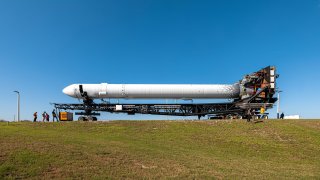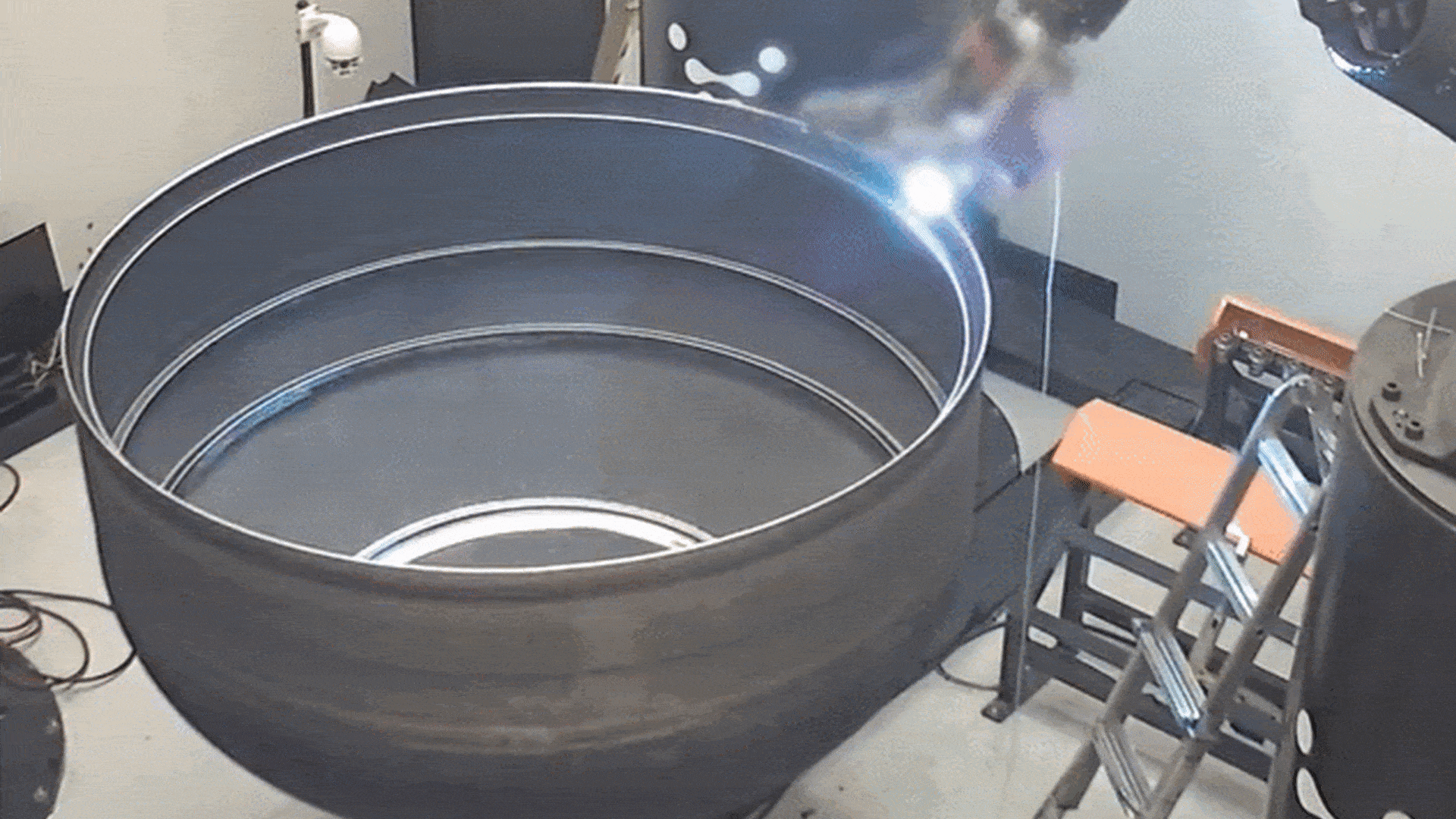
- 3D-printing specialist Relativity Space postponed the first attempt at its debut rocket launch on Wednesday.
- The company's Terran 1 rocket is set to launch from Cape Canaveral, Florida.
- The mission marks the most significant test yet of the company's ambitious manufacturing approach.

3D-printing specialist Relativity Space postponed its first launch attempt on Wednesday, stopping just short of the most significant test yet of the company's ambitious manufacturing approach.
The company's Terran 1 rocket is intended to launch from LC-16, a launchpad at the U.S. Space Force's facility in Cape Canaveral, Florida. The mission, called "Good Luck, Have Fun," aims to successfully reach orbit.
Get Boston local news, weather forecasts, lifestyle and entertainment stories to your inbox. Sign up for NBC Boston’s newsletters.
Relativity had a window between 1 p.m. and 4 p.m. ET to launch on Wednesday. After a couple of short delays and resets in the countdown – common when preparing to launch a rocket for the first time – the company called a "scrub" for the attempt, meaning it was postponed to a later day.
"Thanks for playing," Relativity's launch director Clay Walker said on the company's webcast.
In a tweet, Relativity cofounder and CEO Tim Ellis said that it will be "a few days until" the company is able to make another attempt.
Money Report
While many space companies utilize 3D printing, also known as additive manufacturing, Relativity has effectively gone all-in on the approach. The company believes its approach will make building orbital-class rockets much faster than traditional methods, requiring thousands less parts and enabling changes to be made via software. The Long Beach, California-based venture aims to create rockets from raw materials in as little as 60 days.
Terran 1 stands 110 feet high, with nine engines powering the lower first stage, and one engine powering the upper second stage. Its Aeon engines are 3D-printed, with the rocket using liquid oxygen and liquid natural gas as its two fuel types. The company says that 85% of this first Terran 1 rocket was 3D-printed.
Sign up here to receive weekly editions of CNBC's Investing in Space newsletter.
Relativity prices Terran 1 at $12 million per launch. It's designed to carry about 1,250 kilograms to low Earth orbit. That puts Terran 1 in the "medium lift" section of the U.S. launch market, between Rocket Lab's Electron and SpaceX's Falcon 9 in both price and capability.
Wednesday's debut for Terran 1 is not carrying a payload or satellite inside the rocket. The company emphasized the launch represents a prototype.
In a series of tweets before the mission, Ellis shared his expectations for the mission: He noted that reaching a milestone of maximum aerodynamic pressure about 80 seconds after liftoff would be a "key inflection" point for proving the company's technology.

Relativity is already working on the successor to Terran 1, a larger, reusable line of rockets called Terran R.
The company has raised over $1.3 billion in capital to date at a $4.2 billion valuation. It continues to expand its footprint – with a headquarters and factory in California, engine testing facilities in Mississippi, and the launch site in Florida.
Fellow space founder Jeff Bezos, whose company Blue Origin is where Ellis previously worked, wished Relativity well before the launch. Bezos has stayed in touch with Ellis, and toured Relativity's headquarters in early 2021, CNBC reported.






